The cognac industry is quite touchy about the appearance of a bottle of cognac. In the world of high value spirits, sediment is not desirable as it can either lie on the bottom of the bottle or cause cloudiness of the spirit. But is it really a problem?
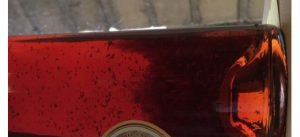 Well, we all understand that cognac is aged in oak casks. Initially it is put into new ones and then, after about 6 – 12 months, it is transferred into old ones. When the casks are new, they are toasted to destroy the harmful tannins in the wood. At this stage, only the good tannins are available in the wood allowing the cognacs to develop their colour and flavour. Many cognac producers will ask for a specific grade of barrel toasting to suit the desired quality of the finished cognac. Repeated use of the new barrels means that over time, they will become old barrels and so used for long term cognac storage. However, as the tannins in the wood are used up, the inside surface of the barrel will gradually degrade leaving a cloudiness in the cognac.
Well, we all understand that cognac is aged in oak casks. Initially it is put into new ones and then, after about 6 – 12 months, it is transferred into old ones. When the casks are new, they are toasted to destroy the harmful tannins in the wood. At this stage, only the good tannins are available in the wood allowing the cognacs to develop their colour and flavour. Many cognac producers will ask for a specific grade of barrel toasting to suit the desired quality of the finished cognac. Repeated use of the new barrels means that over time, they will become old barrels and so used for long term cognac storage. However, as the tannins in the wood are used up, the inside surface of the barrel will gradually degrade leaving a cloudiness in the cognac.
The level of cloudiness will depend on the age and size of the barrel, the type of oak used and the level of toasting initially agreed between the cooper and distiller. The strength and cru of the cognac are also factors. Cognacs produced from the Champagnes mature more slowly than those from other crus. The spirit remains stronger in the barrel for longer, producing a cloudy effect and in some cases, containing minute particles from inside the barrel. As a result, older cognacs, which may have been in their barrels for 40, 50, 60 or more years, may have levels of sediment in them and must be filtered. In most cases, sediment appears at the tail end of the barrel and because it can be very fine, can be missed when bottling. No producer wants to see sediment of any level in his cognac although it is harmless and will gradually settle in the bottle over time.
When filtering is used to remove the sediment it can be costly as it is slow and some of the cognac is lost during the process. All cognacs do have a minute solids content which is not visible but is part of the cognac. But remember, the longer it has been in the barrel the finer the cognac will be!
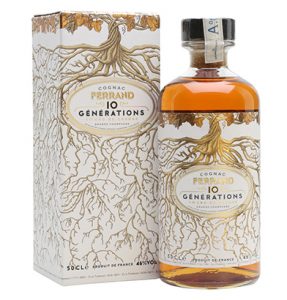 Ferrand has released a new Grande Champagne cognac called Ferrand 10 Generations. It is a tribute to the 10 generations of the Ferrand family that have been present in Segonzac since the 15th century. Blended from a single grape variety, Ugni Blanc, there is little indication of age so do not be misled by the number 10 on the label. What does make this bottle different though, is the design of the label. It appears to be covered with the intricate pattern of vine roots underground. On closer inspection however, you will see the roots also contain the faces of the 10 family generations. So, if packaging is the most important factor when choosing your cognac, this could be for you!
Ferrand has released a new Grande Champagne cognac called Ferrand 10 Generations. It is a tribute to the 10 generations of the Ferrand family that have been present in Segonzac since the 15th century. Blended from a single grape variety, Ugni Blanc, there is little indication of age so do not be misled by the number 10 on the label. What does make this bottle different though, is the design of the label. It appears to be covered with the intricate pattern of vine roots underground. On closer inspection however, you will see the roots also contain the faces of the 10 family generations. So, if packaging is the most important factor when choosing your cognac, this could be for you!
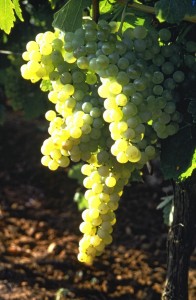 Most people associated with
Most people associated with 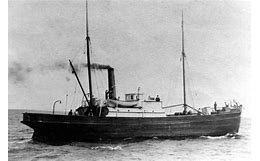 In 1917, SS Kyros set sail for St Petersburg from France. As it approached Sweden, the cargo ship was sunk by a German submarine UC58. For decades the ship was assumed lost but in 1999 it was discovered 77 metres below sea level having been damaged by fishing trawlers and trawl boards. It took 20 years to clear the shipwrecked vessel for exploration, but it was worth the wait as hidden inside were 50 cases of cognac from De Haartman & Co. An exciting and historical find from the time when Tsar Nicholas II was Emperor of Russia. It is difficult to estimate the current condition of the cognac as this will, in part, be dependent on the bottle seals (see
In 1917, SS Kyros set sail for St Petersburg from France. As it approached Sweden, the cargo ship was sunk by a German submarine UC58. For decades the ship was assumed lost but in 1999 it was discovered 77 metres below sea level having been damaged by fishing trawlers and trawl boards. It took 20 years to clear the shipwrecked vessel for exploration, but it was worth the wait as hidden inside were 50 cases of cognac from De Haartman & Co. An exciting and historical find from the time when Tsar Nicholas II was Emperor of Russia. It is difficult to estimate the current condition of the cognac as this will, in part, be dependent on the bottle seals (see 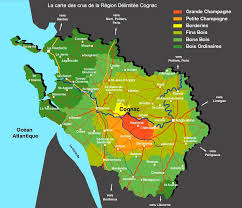 To meet the ever growing demand for
To meet the ever growing demand for 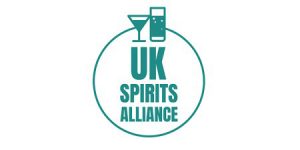 An international group has been formed to tackle issues experienced in the complex and changeable spirits industry. Brexit, trade wars, counterfeiting and debilitating taxes are just a few of the problems that the World Spirits Alliance (WSA) is looking to address. Comprising spirits companies and trade groups the WSA will represent the industry in front of international organisations such as the World Trade Organization, the World Health Organization and the United Nations. Just last month the UK launched its own Spirits Alliance with the aim of “protecting and nurturing the growth of UK spirits”. Its immediate campaign is to stop any further increase of duty on UK spirits. Currently the government states that spirits duty will go up by the retail price index (RPI) in this year’s Budget. This is extremely disappointing as 65% of the nation’s distillers have reported increased sales of spirits since chancellor Philip Hammond froze spirits duty in the 2018 Autumn Budget. Spirit duty rates in the UK have increased from £21.35 per litre of pure alcohol in 2008 to £28.74 in 2019, the fourth highest rate in Europe and one of the highest rates in the world. The price of a bottle of cognac sold at 40%abv, such as
An international group has been formed to tackle issues experienced in the complex and changeable spirits industry. Brexit, trade wars, counterfeiting and debilitating taxes are just a few of the problems that the World Spirits Alliance (WSA) is looking to address. Comprising spirits companies and trade groups the WSA will represent the industry in front of international organisations such as the World Trade Organization, the World Health Organization and the United Nations. Just last month the UK launched its own Spirits Alliance with the aim of “protecting and nurturing the growth of UK spirits”. Its immediate campaign is to stop any further increase of duty on UK spirits. Currently the government states that spirits duty will go up by the retail price index (RPI) in this year’s Budget. This is extremely disappointing as 65% of the nation’s distillers have reported increased sales of spirits since chancellor Philip Hammond froze spirits duty in the 2018 Autumn Budget. Spirit duty rates in the UK have increased from £21.35 per litre of pure alcohol in 2008 to £28.74 in 2019, the fourth highest rate in Europe and one of the highest rates in the world. The price of a bottle of cognac sold at 40%abv, such as 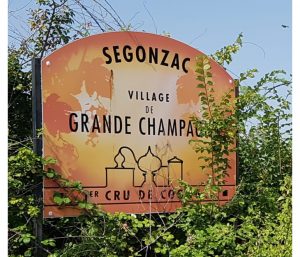 The Charentais have returned from their holidays confident in the knowledge that last years’ exports of cognac reached record highs. They are now busy worrying about when they can start the cognac harvest. The weather has been good and the vines have ripened well, the sun is shining and there is every prospect of another good harvest in Autumn 2019. Harvesting machines are at the ready and the grapes have been tested for their pH and sugar content, so what’s stopping them? Well, for one cognac producer, the discovery of 140 million year old dinosaur bones under the vines of his vineyard near Angeac has resulted in a group of scientists moving in. It is believed that the bones are from one of the biggest dinosaurs ever found in France and are just a little older than the
The Charentais have returned from their holidays confident in the knowledge that last years’ exports of cognac reached record highs. They are now busy worrying about when they can start the cognac harvest. The weather has been good and the vines have ripened well, the sun is shining and there is every prospect of another good harvest in Autumn 2019. Harvesting machines are at the ready and the grapes have been tested for their pH and sugar content, so what’s stopping them? Well, for one cognac producer, the discovery of 140 million year old dinosaur bones under the vines of his vineyard near Angeac has resulted in a group of scientists moving in. It is believed that the bones are from one of the biggest dinosaurs ever found in France and are just a little older than the  While Baijiu is the undisputed national spirit of China,
While Baijiu is the undisputed national spirit of China, 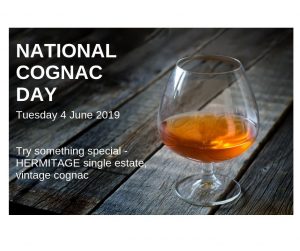 Did you know it was National Cognac Day last month? A relatively new addition to the annual calendar and originating in the United States of America, it is celebrated on the 4th of June. As with all popular, American activities it has become a worldwide event, so mark it in your diary ready for 2020! This year Jeanne O’Brien Coffey came up with 5 reasons to drink
Did you know it was National Cognac Day last month? A relatively new addition to the annual calendar and originating in the United States of America, it is celebrated on the 4th of June. As with all popular, American activities it has become a worldwide event, so mark it in your diary ready for 2020! This year Jeanne O’Brien Coffey came up with 5 reasons to drink  Well, we all understand that cognac is aged in oak casks. Initially it is put into new ones and then, after about 6 – 12 months, it is transferred into old ones. When the casks are new, they are toasted to destroy the harmful tannins in the wood. At this stage, only the good tannins are available in the wood allowing the cognacs to develop their colour and flavour. Many cognac producers will ask for a specific grade of barrel toasting to suit the desired quality of the finished cognac. Repeated use of the new barrels means that over time, they will become old barrels and so used for long term cognac storage. However, as the tannins in the wood are used up, the inside surface of the barrel will gradually degrade leaving a cloudiness in the cognac.
Well, we all understand that cognac is aged in oak casks. Initially it is put into new ones and then, after about 6 – 12 months, it is transferred into old ones. When the casks are new, they are toasted to destroy the harmful tannins in the wood. At this stage, only the good tannins are available in the wood allowing the cognacs to develop their colour and flavour. Many cognac producers will ask for a specific grade of barrel toasting to suit the desired quality of the finished cognac. Repeated use of the new barrels means that over time, they will become old barrels and so used for long term cognac storage. However, as the tannins in the wood are used up, the inside surface of the barrel will gradually degrade leaving a cloudiness in the cognac.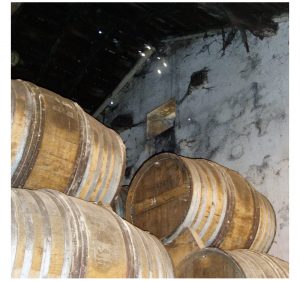 The concept of barrel ageing is said to have been conceived by wine merchants when shipping their wines from the harbour at La Rochelle. The weak and commonly sweet wines that were shipped along the Charente from Cognac often became rancid. The wine merchants therefore reduced their volume by distillation, before shipping abroad in oak barrels. After their arrival in foreign ports it was noticed that the clear distillates within had coloured and gained in flavour.
The concept of barrel ageing is said to have been conceived by wine merchants when shipping their wines from the harbour at La Rochelle. The weak and commonly sweet wines that were shipped along the Charente from Cognac often became rancid. The wine merchants therefore reduced their volume by distillation, before shipping abroad in oak barrels. After their arrival in foreign ports it was noticed that the clear distillates within had coloured and gained in flavour.